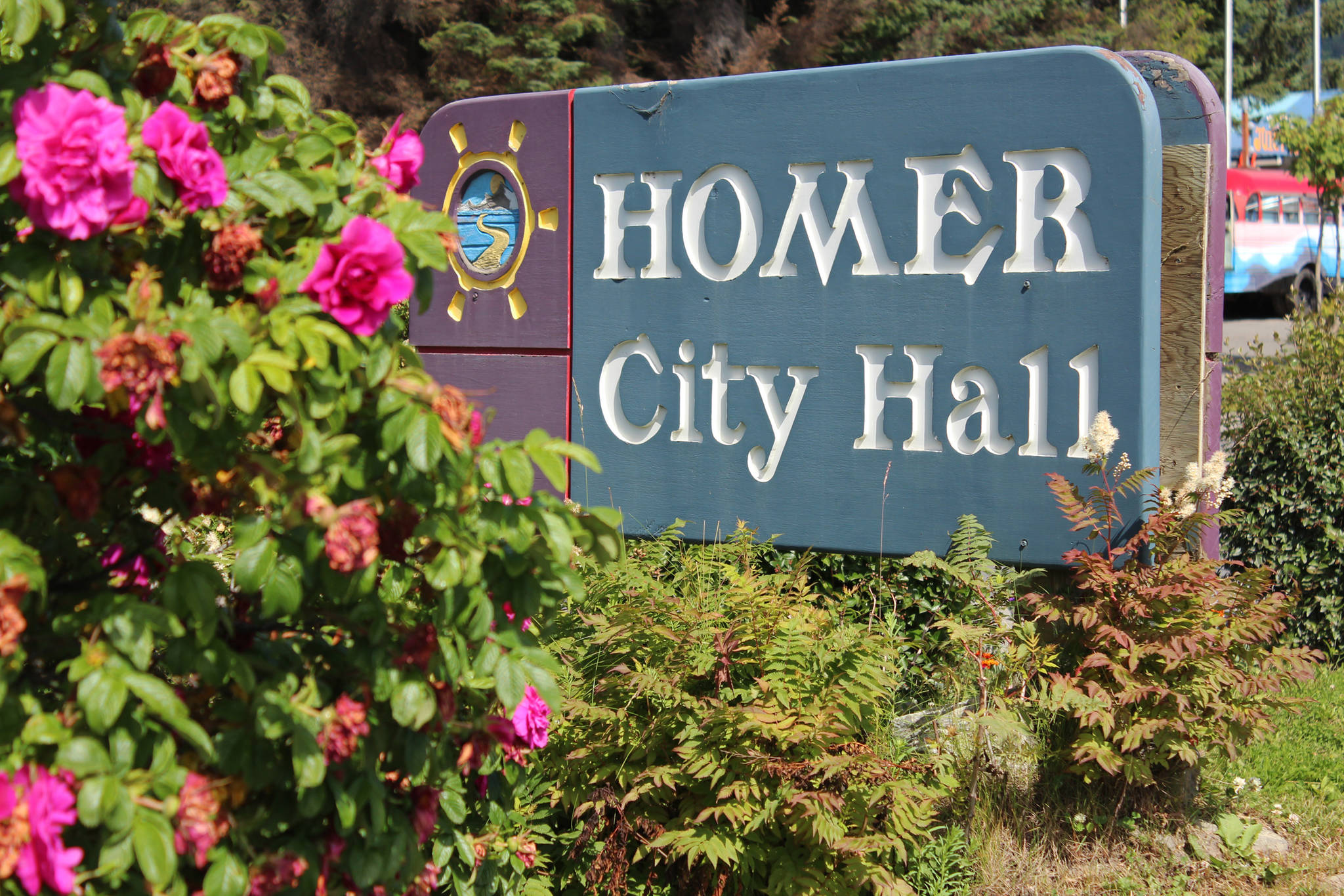Homer has a budget to work from for the coming year.
The Homer City Council unanimously passed the 2019 budget with no discussion and little pomp or circumstance during its Monday, Dec. 10 meeting.
“It’s only the biggest thing we do every year,” joked Mayor Ken Castner after the measure passed easily and quickly.
Members of the council have in the weeks leading up to passing the budget made several amendments to it. They include a 0.5 percent cost-of-living adjustment for city employees and transferring $250,000 of general fund surplus from 2017 to the fund for the police station. The full list of amendments can be read here on the city’s website: cityofhomer-ak.gov/sites/default/files/fileattachments/ordinance/39331/budget_amendments_112618.pdf.
The city’s total expenditures are slated to be $21,479,315 in the 2019 budget. The general fund is set at $12,247,111.
Homer’s budget also includes $593,024 earmarked for capital projects in 2019. Read the full draft budget here: cityofhomer-ak.gov/sites/default/files/fileattachments/finance/page/39071/2019_draft_budget_003.pdf
Council members also decided at Monday’s meeting to remain with its current insurance plan through the Alaska Municipal League Joint Insurance Association.
There was an ordinance on the agenda that, if approved, would have removed the city from that plan and allowed it to issue an RFP for a new one. The plan covers property, liability and auto insurance coverage.
The city’s contract with the Association was set to expire on June 30, 2019. After lengthy discussion, the council members decided it would be too risky to search for a new plan comparable to the current one on the open market.
In their discussion, council members mentioned that the city would get an incentive if it chose to stay with AML.
“We have an opportunity to stay where we are and save about $48,000 in premiums for 2019 and 20, knowing that it will go up by 5 percent the following two years,” said council member Tom Stroozas. “If we were to withdraw and put this out for RFP, … that incentive will basically go away.”
“If we go out for RFP … do we feel comfortable thinking that we’re going to be able to get a typical insurance policy like we have for less than what AMLJIA is currently offering us with the incentive?” Stroozas added.
Council members voted unanimously to stay with the current plan.
Also at the Monday meeting, the council introduced an ordinance that will change the definition of how a plurality of votes is calculated during council member elections. Brought forth by members Donna Aderhold and Heath Smith, the measure aims to make the process more clear.
“It doesn’t actually change anything except the calculation,” Aderhold said. “… The proportion of votes that you need to get elected as a city council member really doesn’t change. It’s just, we changed the percentages so that we don’t have to double the number.”
Currently, Homer’s city code defines a plurality of votes as a certain percentage of the total votes cast in an election, and the code uses the same percentage for both council members and the mayoral race.
Because two council seats come open each election cycle, the percentages for council member elections had been doubled when compared to the percentages required for a plurality in the mayoral vote.
That led to confusing mathematical expressions in city election results such as Aderhold winning 76 percent of the votes in the 2018 election when she received 956 of 2,519 votes cast, or 37.95 percent.
Under current city code, to avoid a runoff, if more than five candidates run, a candidate must win a plurality of 35 percent of the total number of votes cast divided by the number of seats, that is, two.
For example, if 2,000 total votes were cast, a candidate would need at least 350 out of 1,000 votes to avoid a runoff. If less than five candidates run, the plurality is 40 percent.
If the new ordinance is passed, for two vacant 3-year seats, the required percentages for a plurality of the vote will be changed to 20 percent of the votes cast when there are less than five candidates and 17.5 percent of the votes when there are five or more candidates.
If there is a single vacant council seat or two vacant council seats with different terms, the percentage to avoid a runoff for each seat is 40 percent if there are less than five candidates or 35 percent if more than five candidates.
This will be a clearer way to define how a plurality is calculated, according to the ordinance text.
The ordinance is up for public comment and a vote at the Jan. 14, 2019 council meeting.
Reach Megan Pacer at mpacer@homernews.com.


